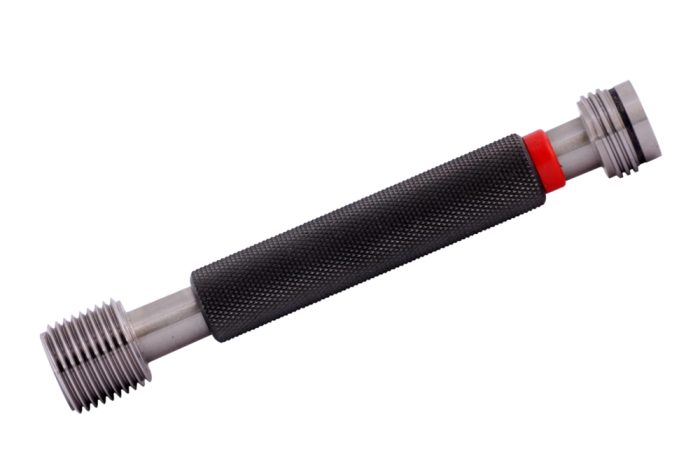Thread setting plug gages are key instruments in manufacturing and quality control. These tools check the accuracy and dimensions of internal threads in parts, making sure they fit the specified tolerance ranges. By ensuring threads are within the correct limits, manufacturers can avoid problems in assembly, maintain product quality, and prevent costly rework. In manufacturing, thread imperfections can lead to poor assembly or even product failures. Thread plug gages help avoid these issues by offering a straightforward method of testing thread sizes.
The Basics of Thread Setting Plug Gages
Thread setting plug gages are designed to inspect a part’s internal threads. They have two ends, one marked GO and the other NO-GO. The GO end checks whether the internal thread is the correct minimum size, and the NO-GO end ensures it does not exceed the maximum size.
- GO: This end should fit smoothly into the threaded hole. If it does not, the thread is too small.
- NO GO: This end should not screw in past two threads. If it does, the thread is too large.
These gages are commonly used in aerospace, automotive, and medical devices, where the smallest error can lead to significant problems. By preventing thread misfit, gages keep products functioning as intended.
Types of Thread Plug Gages
There are different types of thread plug gages designed for specific applications. Standard gages meet general industry specifications, while others are customized to fit unique thread types or tolerances. Common variations include:
- Standard Thread Plug Gages: These are used in general applications and follow industry standards such as ANSI or ISO.
- Tapered Thread Plug Gages: These are designed to check threads with a taper, often used in pipe fittings and similar applications.
- Custom Thread Plug Gages: These gages are made to meet specialized requirements, ensuring precision in unique applications.
These gages allow manufacturers to choose the tool that best fits the specific needs of their parts.
Importance of Thread Plug Gages in Manufacturing
Maintaining thread accuracy ensures that parts fit and function as expected. Thread plug gages directly impact the integrity of the final product. By detecting problems with thread dimensions early, manufacturers can avoid costly rework or defects. For industries that require high precision, such as aerospace or medical manufacturing, gages ensure that parts meet strict regulatory standards.
Thread plug gages also help businesses meet their quality control goals, saving time and reducing errors. When used regularly, these tools lead to smoother operations and better overall product quality.
Maintaining and Using Thread Plug Gages
To get accurate results, thread plug gages should be well maintained. Here are some best practices for their upkeep:
- Cleaning: After each use, remove debris or contaminants to avoid inaccuracies.
- Calibration: Periodically check the gage against a master standard to ensure its accuracy.
- Storage: Keep gages in a dry, clean area to prevent corrosion.
Thread plug gages’ longevity and accuracy depend heavily on their maintenance. Keeping them in top condition is vital for maintaining precise manufacturing processes.
How Willrich Precision Instruments Supports Your Gage Needs
At Willrich Precision Instruments, we understand the importance of precision tools like thread plug gages. With over 50 years of expertise in gaging and inspection, we offer high-quality products, expert calibration services, and unmatched customer support.





